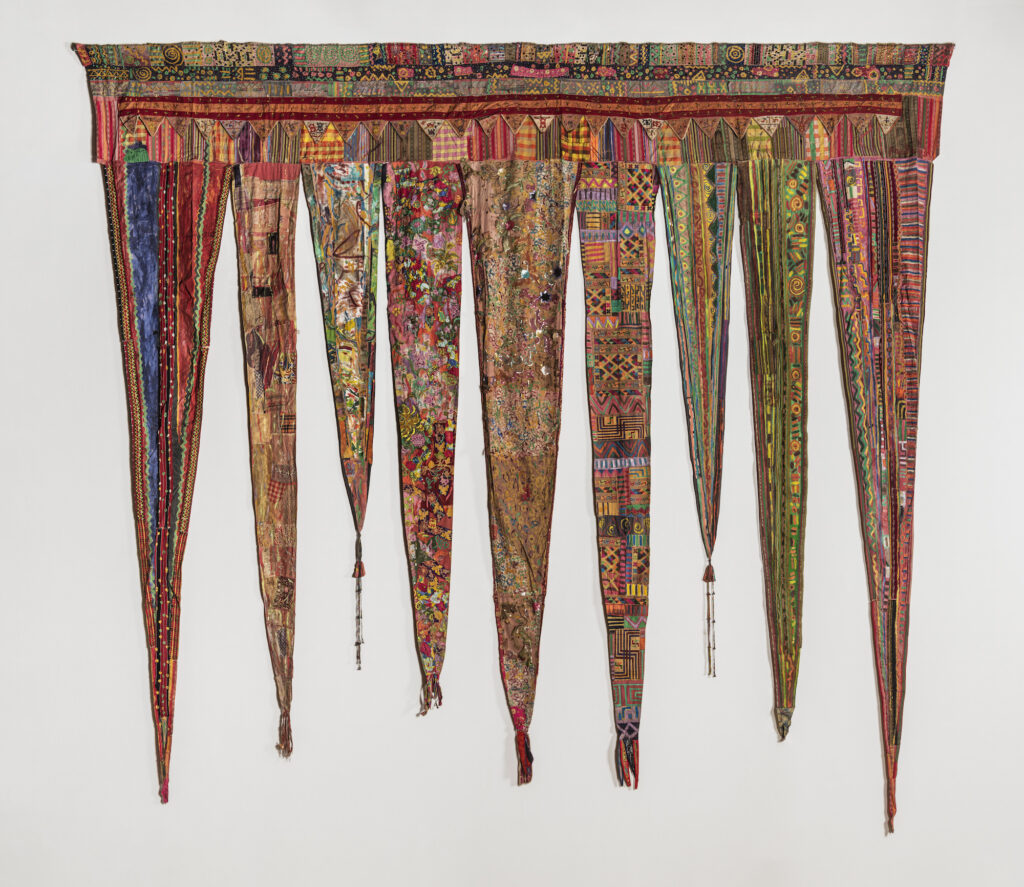Filipina-American artist Pacita Abad was a cosmopolitan feminist figure who pursued worldly compositions and conceived a vibrant correlation between cultural vocabularies, subjective political experience, itinerancy, and civic struggle. Abad developed distinctive approaches to social realism and abstraction while learning about and sampling from a range of techniques, including Korean ink brush painting, African mask-making, mirror embroidery of Gujarat and Rajasthan, Indonesian ikat and wayang puppetry, and Papua New Guinean shell decoration.
Abad left the Philippines in 1969 after being involved in protests against the dictatorship and election fraud of the Ferdinand Marcos regime and eventually made her way to San Francisco, where she studied Asian history. A yearlong trip hitchhiking overland with her husband, development economist Jack Garrity, through Iran, Afghanistan, Pakistan, India, Sri Lanka, Myanmar, Thailand, Laos, Taiwan, and Hong Kong became seminal to her practice and autonomous study of textile arts, material research, and indigenous life practices.
This selection includes a range of Abad’s large-scale trapunto paintings begun in the late 1970s that extend the technique of quilting to perform as a repository of invented forms—allegorical and narrative—integrating objects like buttons, sequins, printed fabric, shells, beads, and other found materials. The epic wall hanging 100 Years of Freedom: Batanes to Jolo (1998) celebrates the Philippines’ independence by foregrounding its living traditions, architecture, and diverse communities that survived centuries of Spanish colonial rule. Door to Life (1998) is a suite of paintings made in response to travels to Yemen in which Abad intimately observed mountain villages, souks, places of worship, and the old town of Sanaa, elaborately sketching Gamariya windows and doorways made of steel, carved wood, stained glass, and even clay and straw as the leitmotif. These doors unfasten thresholds of interior subjectivity and social architecture while also standing as an imaginary gateway into a region currently embroiled in civil war. The Sky Is the Limit (2000) is premised on the artist’s journeys to India, particularly Rajasthan, where she was inspired by traditions of mirror work, embroidery, silver ornamentation, and geometric stained glass. Turmoil (1991) and White Heightens the Awareness of the Senses (1998) include moments of processing deep grief after the passing away of Abad’s mother, conveying emotional texture entwined with the sonic residues of her favorite blues and jazz music and histories of political strife.
Natasha Ginwala

